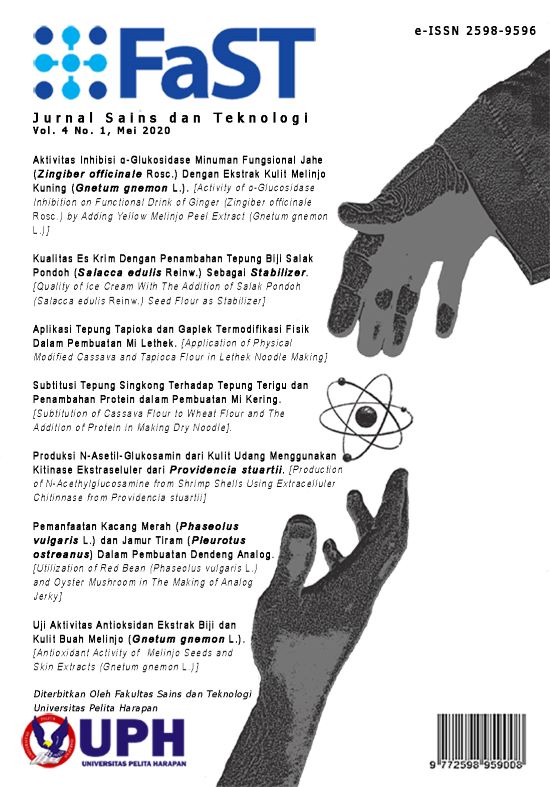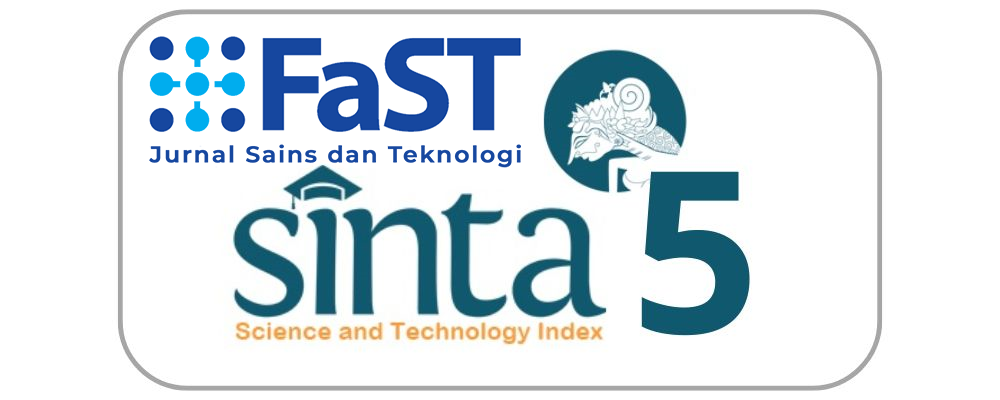UTILIZATION OF RED BEAN (Phaseolus vulgaris L.) AND OYSTER MUSHROOM IN THE MAKING OF ANALOG JERKY
Keywords:
jerky, oyster mushroom, red bean, vegetable, vegetarianAbstract
Jerky is a traditional Indonesian processed product which is generally made from real meat. Vegans cannot consume this product, so making vegetable jerky can answer the needs of vegan food consumption variations. The use of red beans as a source of high protein and natural red color like meat, and oyster mushrooms as a source and texture of fiber resembling meat, are considered appropriate in determining the main raw material for making vegetable jerky. This study aims to utilize red beans and oyster mushrooms in the manufacture of vegetable jerky based on the ratio of red bean - oyster mushroom and drying time, and determine the maximum shelf life of vegetable jerky. Initially, red beans and oyster mushrooms are made into a mixture with a ratio (100: 0, 75:25, 50:50, 25:75, and 0: 100) and dried at 50 °C for 6, 7, and 8 hours. The ratio of 75:25 for 8 hours of drying produces vegetable jerky that meets SNI requirements for beef jerky with a protein content of 15.03%; water 4.85%; aw 0.43; hardness 1317 g; hedonic color 5.37, aroma 5.40, taste 4.83, hardness 5.17, and overall 5.47. This ratio is used at a later stage to determine the maximum shelf life (weeks 0, 1, 2, 3, and 4). A series of analyzes refer to the 2nd week as the maximum shelf life with acid number 0.94 mg KOH/g, peroxide number of 2.61 meq/1000g, thiobarbituric acid (TBA) number 0.41 malonaldehyde/kg, fat 5.01%, aw 0.64, water 11.40%, and total plate count (TPC) 4.99 log cfu/g.
Downloads
Published
Issue
Section
License
“Authors who publish with this journal agree to the following terms:
1) Authors retain copyright and grant the journal right of first publication with the work simultaneously licensed under a Creative Commons Attribution License (CC-BY-SA 4.0) that allows others to share the work with an acknowledgement of the work's authorship and initial publication in this journal.
2) Authors are able to enter into separate, additional contractual arrangements for the non-exclusive distribution of the journal's published version of the work (e.g., post it to an institutional repository or publish it in a book), with an acknowledgement of its initial publication in this journal.
3) Authors are permitted and encouraged to post their work online (e.g., in institutional repositories or on their website). The final published PDF should be used and bibliographic details that credit the publication in this journal should be included.”



